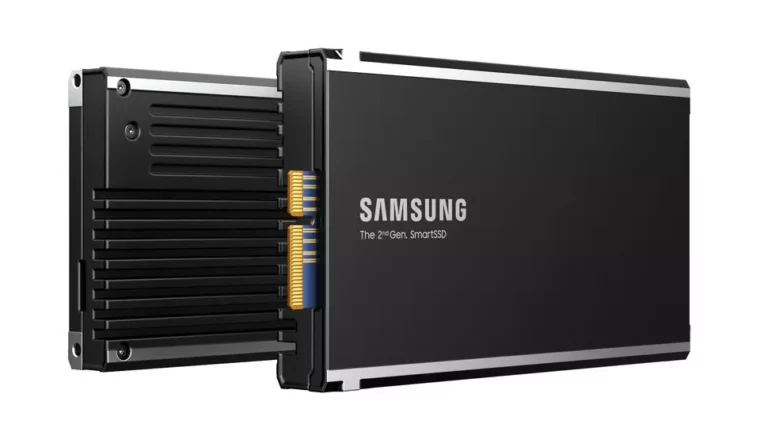Samsung unveiled the second version of its SmartSSD. The drive features a chipset that allows servers to offload processor tasks. According to Samsung, the model is up to 70 percent more energy-efficient than current data center SSDs.
Samsung launched the first SmartSSD in 2020. The drive combines storage and computing. The model contains a Xilinx chipset to process data. In that respect, the SmartSSD sits somewhere between a processor and an SSD.
Samsung recently announced the next version. The concept is the same. The drive features a chipset that allows servers to offload workloads. The chipset was modernized by Xilinx. The release date is unknown.
SmartSSD
This time around, Samsung used an AMD Xilinx Versal Adaptive SoC. The specifications are unknown, but we expect several terabytes of storage. Samsung designed the model as an alternative to data center SSDs. According to the organization, the drive speeds up database queries by up to 50 percent. Energy usage reportedly decreases by up to 70 per cent.
The drive isn’t available yet, which makes it impossible to evaluate the numbers. Richard New, VP of Research at Western Digital, is optimistic. “There’s clearly a broad class of applications that benefit from offloading compute functions from a main CPU to a more efficient processing engine that is more suited to the specific problem of interest”, the researcher said in an interview with TechRadar.
New cites several examples, including video transcoding, compression and database acceleration. Each application has common ground. Workloads are processed faster when a processor runs close to the SSD. That’s where the SmartSSD excels. Though limited in numbers, use cases absolutely exist.
According to Samsung, the first version of the model is in use by several large IT organizations. The South Korean giant wants to expand the technology in coming years.
Tip: Samsung moves to PCIe 5.0, develops first supported SSD
